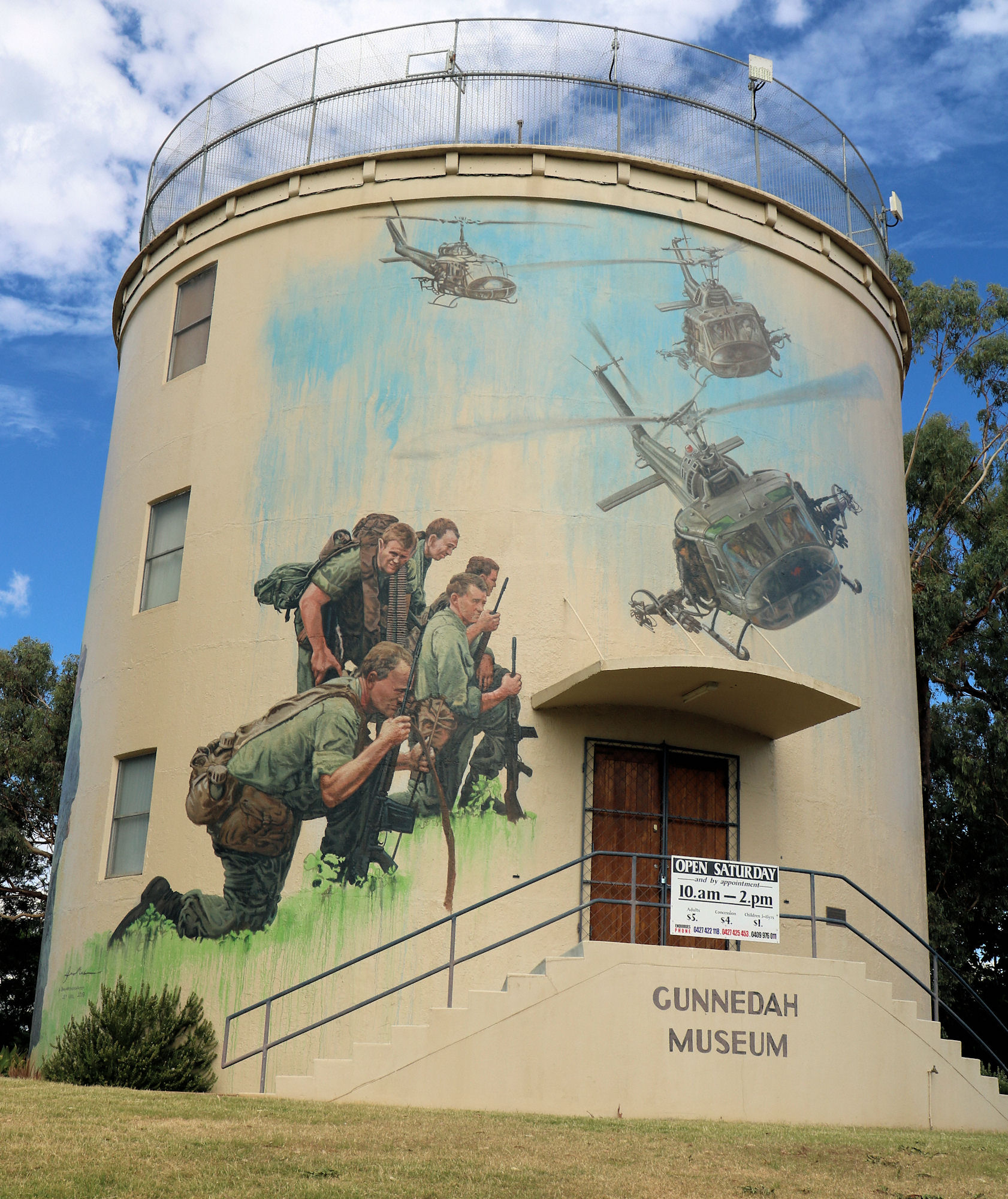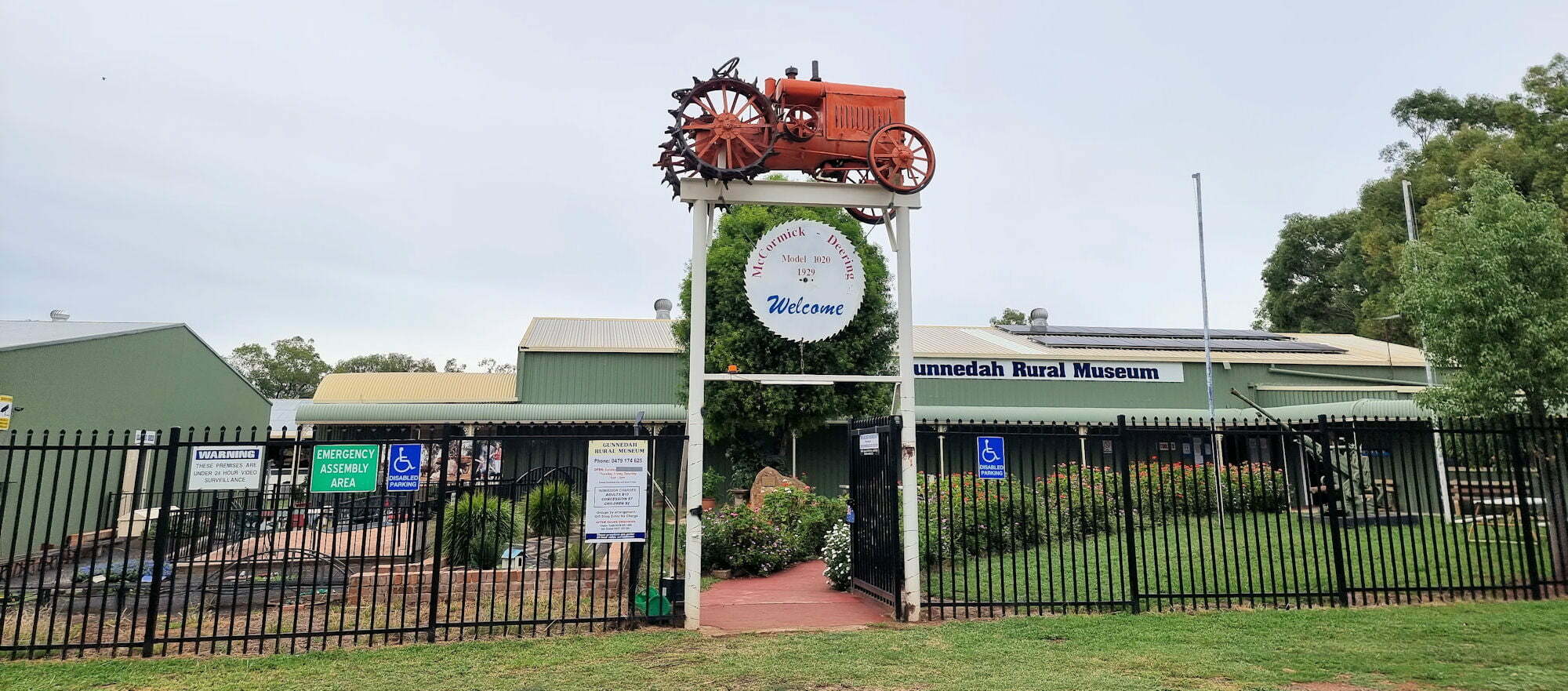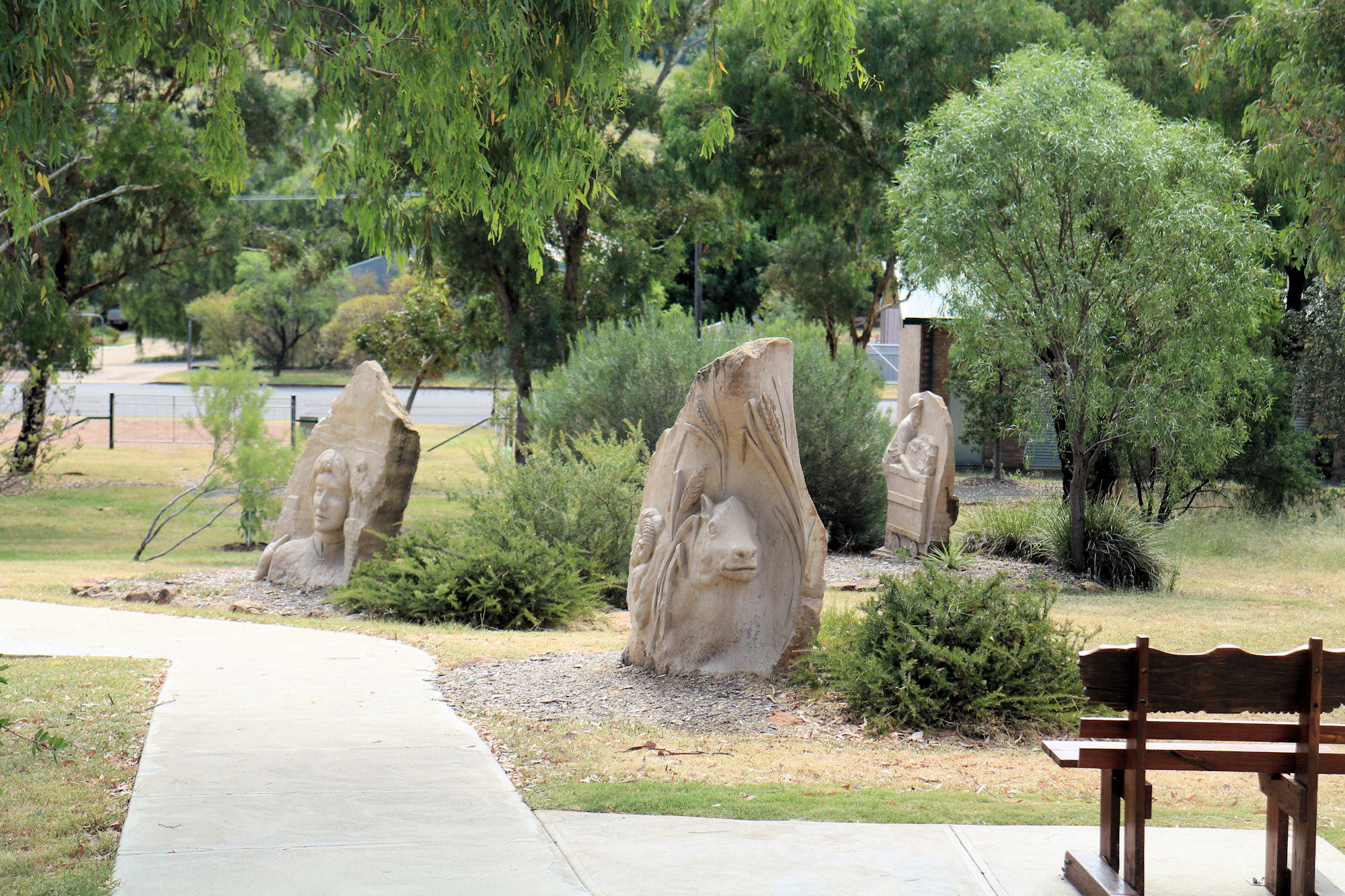Tag: Gunnedah
-
Gunnedah Water Tower Museum

Gunnedah Water Tower Museum Located near the Dorothea Mackellar Memorial Statue, the Gunnedah Water Tower Museum is a must see if visiting the area. Parking is easy because of the car park near the memorial, or on the road outside. Only open on Saturday from 10 until 2 you need to time your visit ti… Read more
-
Gunnedah Rural Museum

Gunnedah Rural Museum Arriving at the museum we were greeted by a happy volunteer who gave us a map of the layout and told us to help ourselves to a tea or coffee. With our travels we have found rural museums occupy old houses, so are quite small. Not the Gunnedah Rural Museum, it takes… Read more
-
Pensioners Hill Lookout Sculpture Park

Pensioners Hill Lookout and Sculpture Park A beautiful place with views over Gunnedah, Pensioners Hill Lookout also has a sculpture park, which makes an even more interesting place to visit. The walkway through the park is named after Ailsa Iceton, a nurse who performed many charitable works in Gunnedah. During the Great Depression, she would… Read more